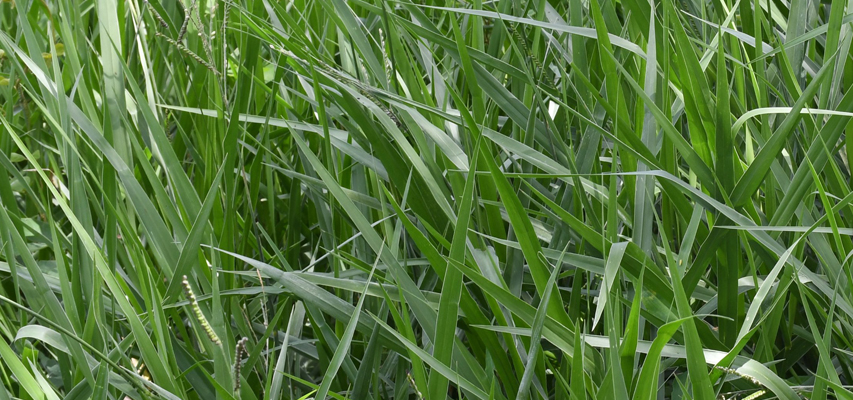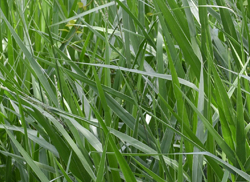
Pastoralists in faraway Mandera County in the north-east of the country have never been happier.
Tales of drought, starvation and official neglect are gradually giving way to prosperity. And believe it or not, what is changing the fortunes of the people in the region is something many consider a nuisance – grass.
In 2008/2009, northern Kenya experienced one of its worst droughts and famines ever affecting more than 10 million people, with a number dying from starvation. To compound the situation and the widespread picture of misery, carcasses of livestock were strewn all over, as thousands of animals died from lack of pasture and water.
But the pastoralists of Mandera can now heave a sigh of relief, courtesy of a Sudan grass farming project that started in 2008 to grow livestock fodder along River Daua. Mandera is one of the arid and semi-arid counties in Kenya, with an annual rainfall of between 400mm and 700mm. The project, initiated by Echo (a donor agency), in partnership with Cooperazione Internationale (Coopi, an NGO) and the Ministry of Livestock Development, has not only enhanced communities’ resilience to drought through innovative market-based solutions, but also opened an alternative stream of income for Sudan grass farmers. By October 2012, the district had 29,910 bales (20kilos each) of the grass available for sale in case of drought, valued at Sh9.1 million.
Today, local farmers say the introduction of Sudan grass has changed the equation, as livestock deaths due to drought have reduced drastically. This is a relief to the pastoralists who keep 317,000 livestock in the county. According to Mr Omar Isaack, a member of Kamil Pastoral Field Schools (PFS) in Khalalio location, some successful pastoral field schools have managed to sell fodder worth Sh1.2 million in a year with proceeds being shared between 25 members. On average, farmers harvest between 200 and 300 bales, earning between Sh70,000 and Sh105,000. Many farmers are today growing grass on a commercial basis, with handsome returns.
In 2010, Ms Halima Mohamed from Bur Bor harvested 2,000 bales and sold 908 to COOPI, at Sh350 each, earning a total of Sh317,800. “I used the cash to fence off my home, bought 13 head of cattle for fattening and paid school fees for four children in secondary school,” she said.
The farmers said that proceeds from Sudan grass exceed what they used to get from other farm ventures. Mr Omar added that, “most farmers are now able to take their children to secondary school and build stone houses, something that was rare.”
Sudan grass, which belongs to the warm season grasses family, offers the best forage dry matter production solutions, as it matures quickly and is efficient in water absorption with minimal evapo-transpiration due to leaf structure. The grass is fine. It originated in East Africa, and is often grown in southern Europe, North and South America, as a forage or cover crop. In the US, Sudan grass is the highest yielding forage crop grown during summer. It can be harvested two to three times in a season and stored in bales. It is rich in crude protein as corn, though protein levels reduce rapidly and fibre levels increase as the crop matures. Farmers are, however, advised not to feed their livestock with young (30 days) green Sudan grass, as it contains hydrocyanic/prussic acid and can be harmful. To avoid the negative effects, the first cut harvest for the grass should be eight weeks (60 days) after planting. Also, allow the forage to dry before feeding it to livestock.
Sudan grass, a member of the warm season grasses family, offers the best forage and dry matter as it matures quickly and efficiently absorbs water
In Mandera, farmers plant the grass mainly on 5m x 5m basins, which are irrigated twice a week using the traditional basin irrigation. The grass must be planted into non-clod warm soils at a depth of two to 3.5cm, where spacing between rows is 18 to 36cm with a seed rate of about 15 kilos per hectare. Since the crop has a high growth and maturity rate, weeding is rarely needed. The crop is harvested 60 days after planting. At this stage it is over 65cm. A second cut can be done 35 to 45 days after the first one and a third after a similar period. According to available literature, yield is five to 7.5 tonnes per hectare. A 5m x 5m basin produces four bales (each 18kg) of dry grass per harvest. On average, farmers harvest two to four times a year depending on the weather. However, yields vary with season, and moisture and are higher during hot seasons.
Production costs
Irrigation is a major cost, as farmers have to do it twice a week for eight weeks. On one acre, a farmer spends about Sh2,000 on land preparation, Sh5,000 on fuel, and Sh3,000 for irrigation labour. Other costs relate to planting, harvesting and making of fodder bales.
The key challenges include flooding during rainy seasons, lack of inputs seeds), limited finances and high illiteracy levels. However, the potential for fodder farming is high. The district has a potential to irrigate 5,800 hectares, but only 2,060 hectares are under irrigation. Other organisations working with farmers include VSF-Suisse, National Drought Management Authority specifically on capacity building trainings on production and making of hay. District Steering Group is also a major player. Mr Gitau is an agribusiness development consultant and freelance writer with Smart Farmer.
How the project works
The project is aimed at reducing drought-related risks through improved effectiveness and efficiency in drought preparedness and management. It was started with the identification and training of 100 farmers along six riverine locations, who were provided with the grass seeds.
According to the Coopi project coordinator, Mr Isaac Wamugi, “while about 30 per cent of the farmers did not take good care of the grass, those who did, got a good harvest.”
The results encouraged the NGO to seek more funds to increase the number of beneficiaries and area under production. It is through this that the Food and Agriculture Organisation (FAO), which has been the main financier of the project to date, came into play. With funding from the FAO, the project now covers 10 locations along the river in Mandera East and Lafey districts.
Implementing partners are working with about 260 fodder farmers organised in 10 pastoral field schools (PFSs), who are cultivating over 300 hectares under basin irrigation. A PFS is a group of farmers (25 – 40) from a given locality, who are organised for production, training, storage, and marketing. Farmers are supplied with seeds under their respective pastoral field schools, where they grow part of the seeds on the group farm and the rest on their own plots.
However, there are also other farmers growing the crop outside the PFSs. According to the Mandera East District Livestock Development officer, Mr Oscar Ngasi, “there are about 500 fodder farmers in the district where Sudan grass is the main fodder crop.”
While fodder growing was being done on a small-scale as early as 2003, farmers were not organised, which made drought management difficult, he said.
The project partners organised farmers into PFSs as focal points for training, production, storage and marketing. This move has yielded positive results as fodder stock available for sale and distribution to hinterland districts during drought can now be determined at any time. Farmers are also able to harvest and sell fodder two to three times a year.
Most PFSs are growing Sudan grass on six to 10-acre group farms, while individual farmers are cultivating, on average, four acres. Normally, each PFS has a fodder store built by the FAO via Coopi, where harvests from group farms and member farmers are stocked. Sales proceeds are then shared among members.
Normally, each PFS has a fodder store built by the FAO via Coopi, where harvests from group farms and member farmers are stocked. Sales proceeds are then shared among members
The main markets for Sudan grass include own consumption (about 40 percent), urban livestock keepers in Mandera Town, livestock traders, Takaba and Southern Ethiopia. The market for fodder is big enough and farmers often sell at the farm gate.
